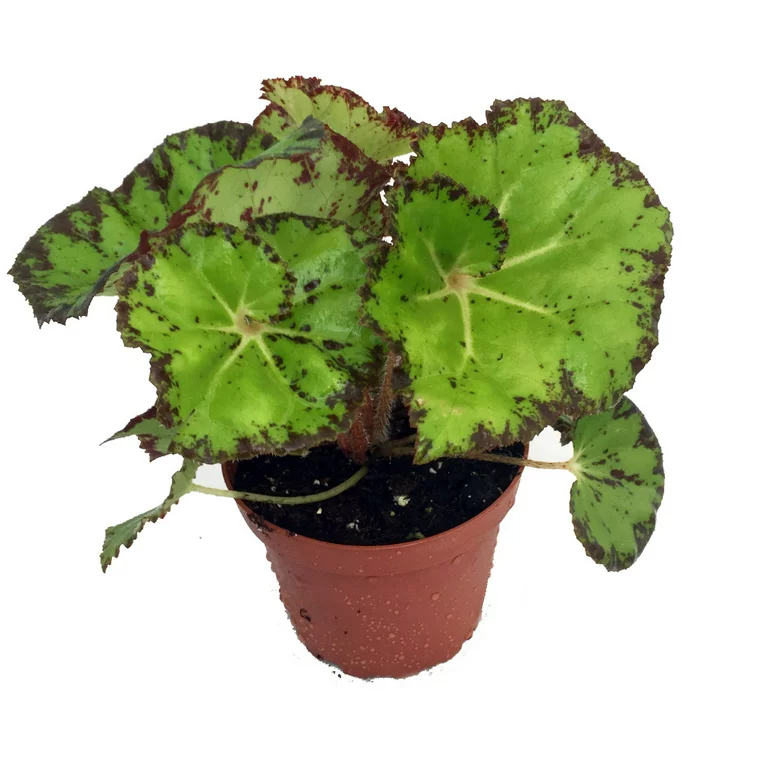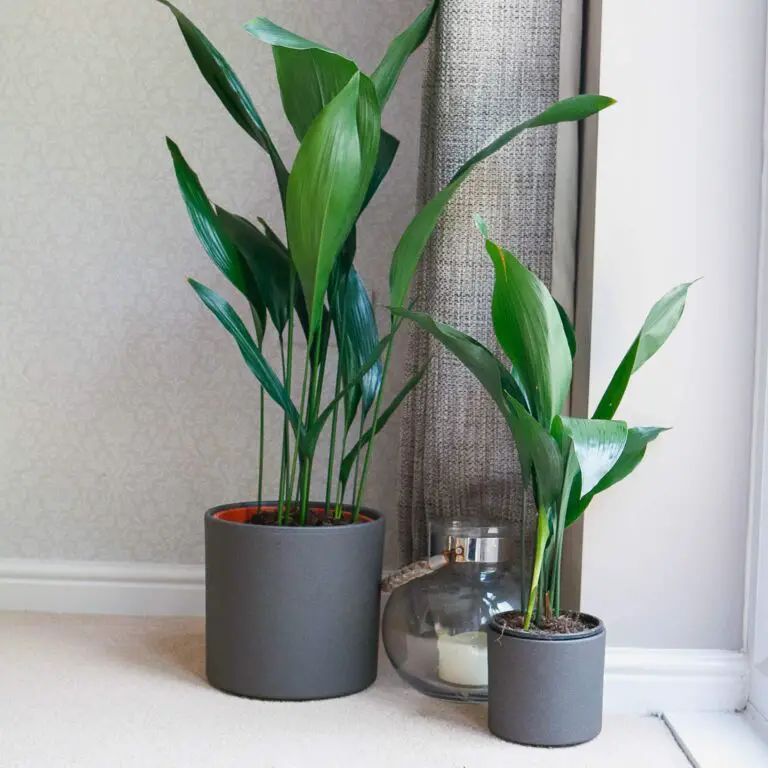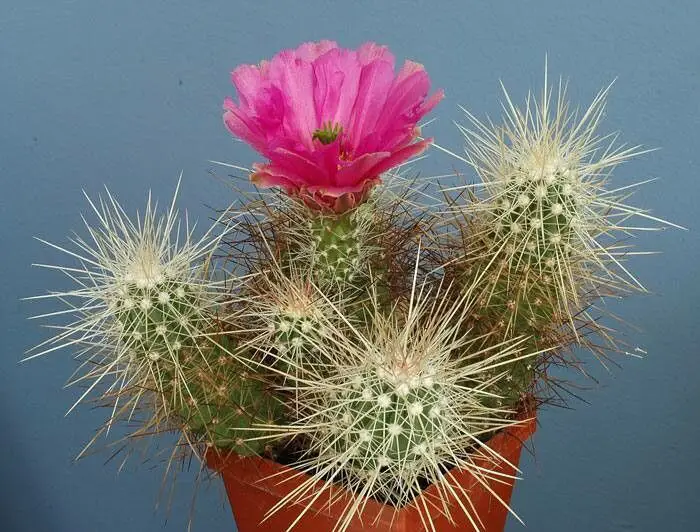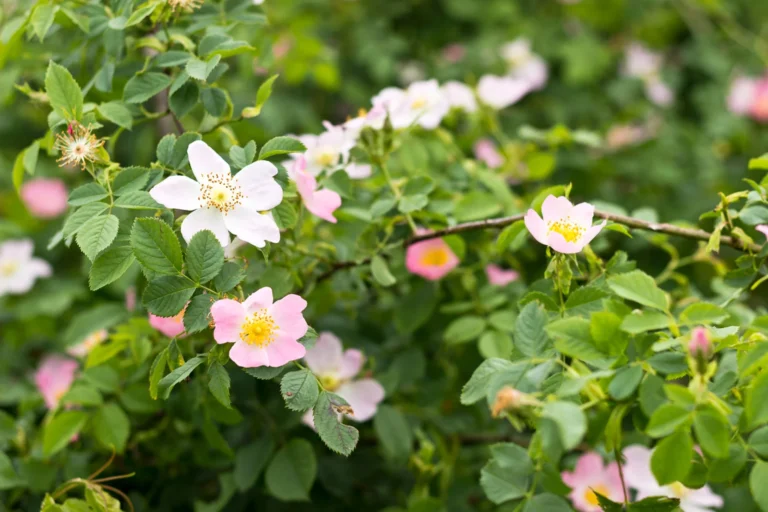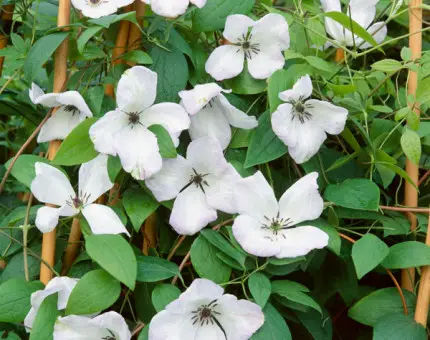Introduction to Areca Palm Trees
Areca Palm Trees, scientifically known as Chrysalidocarpus lutescens or Dypsis lutescens, are renowned for their lush, feathery fronds and their ability to thrive as both indoor and outdoor ornamental plants. Belonging to the Arecaceae family, these palms are native to Madagascar but have found a home in landscapes and homes around the world.
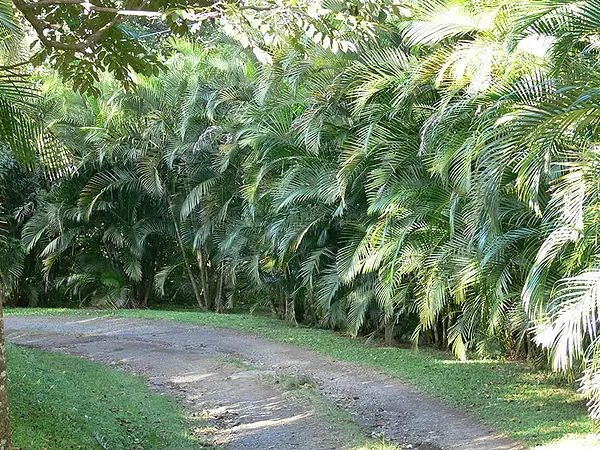
Plant Specifications:
Areca palms are characterized by their elegant appearance, featuring slender, golden-green trunks that emerge from a cluster of feathery, arching fronds. These fronds, resembling large, airy plumes, create a tropical ambiance wherever they are planted. The plant can reach impressive heights, often growing up to 20 feet or more when mature, making them an excellent choice for creating privacy screens or hedging.
Plant Care:
Caring for Areca Palms involves providing them with the right conditions to thrive. These palms flourish in well-draining soil and prefer partial shade to filtered sunlight, making them adaptable to various environments. Adequate watering is crucial, allowing the soil to dry slightly between waterings to prevent root rot. Regular fertilization during the growing season enhances their overall health.
Landscape Uses for Areca Palm:
Areca palms are versatile and can be used in various landscaping settings. They make excellent focal points in gardens, serving as accent plants due to their graceful appearance. Moreover, they are commonly used to create lush, green hedges, providing an effective and aesthetically pleasing solution for enhancing privacy and defining outdoor spaces.
Search for a Plant:
When considering Areca palms for your landscape, it’s essential to choose healthy specimens. Look for plants with vibrant, green fronds, and inspect the overall condition of the trunk. Additionally, ensure that the soil and light conditions in your chosen location align with the preferences of Areca palms for optimal growth.
In the following sections, we will delve into the specifics of planting and caring for Areca Palm Tree Hedges, exploring the factors that contribute to their growth and how to maximize their benefits in your landscape.
Understanding Areca Palm Basics
Plant Specs:
Areca Palm (Chrysalidocarpus lutescens/Dypsis lutescens)
- Common Names: Areca Palm, Butterfly Palm, Golden Cane Palm
- Family: Arecaceae
- Origin: Native to Madagascar
- Appearance: Slender, golden-green trunk with feathery, arching fronds
- Height: Can reach up to 20 feet or more
- Sun Exposure: Partial shade to filtered sunlight
- Soil Type: Well-draining soil
- Watering: Allow soil to dry slightly between waterings
- Fertilization: Regular fertilization during the growing season
- Landscape Use: Accent plants, privacy screens, hedges
Plant Care:
Soil Requirements: Areca palms thrive in well-draining soil. A mixture of peat, perlite, and pine bark works well. Ensure that the soil pH is slightly acidic to neutral.
Sunlight: Provide partial shade to filtered sunlight. While they can tolerate some direct sunlight, too much exposure can scorch the fronds.
Watering: Maintain a consistent watering schedule, allowing the top inch of soil to dry between waterings. Overwatering can lead to root rot, so it’s crucial to strike a balance.
Fertilization: Feed Areca palms regularly during the growing season with a balanced liquid fertilizer. This helps promote healthy growth and vibrant fronds.
Temperature and Humidity: Areca palms prefer warm, tropical conditions. They thrive in temperatures between 65°F to 75°F (18°C to 24°C) and appreciate higher humidity levels.
Plant Spacing:
When planting Areca palms, consider their mature size. Space them at least 6 to 8 feet apart to allow for proper air circulation and prevent overcrowding. This spacing ensures that each palm has sufficient room to grow and develop a full, lush canopy.
Landscape Uses for Areca Palm:
Areca palms are incredibly versatile in landscaping:
- Accent Plants: Their graceful fronds make them ideal focal points in gardens or outdoor spaces.
- Privacy Screens: Planted in a row, Areca palms create dense, green barriers, offering privacy and seclusion.
- Hedges: When used as hedges, Areca palms not only provide privacy but also add a touch of tropical elegance to the landscape.
Search for a Plant:
When selecting Areca palms, choose specimens with robust, green fronds and inspect the overall health of the plant. Avoid those with yellowing or browning leaves, as this may indicate stress or disease. Consider the specific needs of Areca palms, including soil and light conditions, to ensure their successful integration into your landscape.
In the subsequent sections, we’ll explore the intricacies of planting Areca Palm Tree Hedges and delve into the factors that contribute to their optimal growth.
Planting Areca Palm Tree Hedges
Planting Areca Palm Tree Hedges requires careful consideration of spacing, soil preparation, and overall care. In this section, we’ll delve into the key aspects of ensuring successful establishment and growth.
How Far Apart Should You Plant Areca Palms?
The proper spacing of Areca palms is crucial for their healthy development and the creation of a visually appealing hedge. A general rule of thumb is to plant Areca palms 6 to 8 feet apart. This spacing allows each palm to receive adequate sunlight and ensures proper air circulation, preventing issues such as fungal diseases that thrive in crowded conditions.
When planning the layout of your hedge, consider the mature width of the Areca palms. This thoughtful spacing not only enhances the aesthetic appeal of the hedge but also contributes to the overall well-being of the individual plants.
Reasons Why Spacing Is Important for Areca Palms
Proper spacing serves several essential purposes:
- Prevents Overcrowding: Adequate spacing prevents the palms from competing for sunlight, nutrients, and water, reducing the risk of stress and diseases.
- Promotes Air Circulation: Good air circulation minimizes the likelihood of fungal infections and allows for efficient transpiration, enhancing overall plant health.
- Facilitates Maintenance: Well-spaced palms are easier to maintain, prune, and inspect. This makes it simpler to address any issues promptly and keep the hedge in optimal condition.
Plant Spacing
When measuring the distance between Areca palms during planting, consider the center-to-center spacing. This measurement ensures that, as the palms mature, they will form a continuous, visually appealing hedge.
Landscape Uses for Areca Palm Hedges
Areca palm hedges offer various landscaping benefits:
- Privacy Screening: Strategically planted Areca palm hedges create a natural barrier, providing privacy to outdoor spaces.
- Aesthetic Appeal: The feathery fronds and golden-green trunks contribute to a tropical and elegant landscape design.
- Windbreaks: Dense Areca palm hedges act as effective windbreaks, protecting more delicate plants in your garden.
Maintenance Requirements
While Areca palms are relatively low-maintenance, regular care ensures the longevity and vitality of the hedge. This includes:
- Pruning: Trim any damaged or discolored fronds to maintain the hedge’s visual appeal.
- Fertilization: Provide a balanced fertilizer during the growing season to support healthy growth.
- Watering: Maintain a consistent watering schedule, adjusting for environmental conditions and seasonal changes.
In the upcoming sections, we’ll explore the specific factors influencing the growth of Areca palms, from sunlight requirements to the intricacies of their root system.
Growth Factors for Areca Palms
Areca palms, known for their graceful appearance and versatility, exhibit unique growth patterns influenced by various factors. In this section, we’ll delve into the key considerations that contribute to the growth of Areca palms.
Spread Length
The spread length of Areca palms refers to the horizontal expansion of their foliage. As these palms mature, their feathery fronds create a lush canopy that can extend several feet from the central trunk. Understanding the potential spread length is crucial when planning the layout of your landscape or hedge.
Tip:
- When designing with Areca palms, consider the spread length to ensure they have enough space to develop a full and visually appealing canopy.
How Wide Do Areca Palms Get?
The width of Areca palms varies depending on factors such as age, environmental conditions, and care. Mature Areca palms can have a width ranging from 6 to 10 feet. This width contributes to their effectiveness as privacy screens and hedges, creating a dense and green barrier.
Tip:
- When planting Areca palms for hedges, provide ample space between each plant to accommodate their mature width.
How Long Does It Take for Areca Palms to Grow?
The growth rate of Areca palms is influenced by factors like sunlight, water, and soil conditions. Generally, Areca palms are considered moderately fast growers, with an average annual growth rate of 6 to 10 inches. However, individual growth rates may vary based on environmental factors and care practices.
Tip:
- Provide optimal growing conditions, including adequate sunlight and regular watering, to promote healthy and robust growth.
Do Areca Palms Like to Be Root Bound?
Areca palms generally prefer well-draining soil and do not thrive when root-bound. Planting them in spacious containers or allowing adequate space in the ground encourages a healthy root system and overall plant development.
Tip:
- Ensure the planting area provides enough room for the roots to spread, promoting stability and nutrient absorption.
Do Areca Palms Spread?
Areca palms have a natural tendency to form clusters or clumps as they mature. While individual plants do not spread aggressively, the offsets or “pups” that emerge from the base contribute to the palms’ bushy appearance.
Tip:
- Monitor the growth of offsets and consider them when planning the spacing of Areca palms for hedges or landscaping.
How Do You Multiply Areca Palms?
Areca palms can be multiplied through the division of offsets. As the palm matures, it produces new shoots or offsets at the base. These can be carefully separated from the main plant and replanted to create new Areca palms.
Tip:
- When multiplying Areca palms, ensure each offset has roots attached for successful transplantation.
Understanding these growth factors allows for effective planning and maintenance of Areca palms in your landscape. In the next sections, we’ll explore the specific environmental requirements, including sunlight and soil conditions, to further enhance the health and vitality of your Areca Palm Tree Hedges.
Optimal Conditions for Areca Palms
Achieving optimal conditions for Areca palms is essential to ensure their healthy growth and vibrant appearance. In this section, we’ll explore the specific environmental requirements, including sunlight, soil, and water access, that contribute to the well-being of Areca palms.
Sunlight Requirements
Areca palms thrive in bright, indirect light, or filtered sunlight. While they can tolerate some direct sunlight, exposure to harsh, intense sunlight can lead to scorched or yellowing fronds. Therefore, it’s crucial to provide partial shade or dappled sunlight for optimal growth.
Tip:
- Plant Areca palms in locations where they receive morning sunlight or filtered light throughout the day to prevent sun damage.
Soil
Well-draining soil is paramount for the health of Areca palms. A mixture of peat, perlite, and pine bark provides the ideal growing medium. The soil should be kept consistently moist but not waterlogged, as excessive moisture can lead to root rot.
Tip:
- Conduct regular soil checks to ensure proper drainage and adjust watering practices accordingly.
Water Access
Adequate and consistent watering is crucial for Areca palms. While they prefer slightly moist soil, it’s essential to allow the top inch of soil to dry between waterings. This prevents overwatering, which can lead to root rot, a common issue in poorly-drained soil.
Tip:
- Adjust the frequency of watering based on environmental conditions, such as temperature and humidity, to meet the specific needs of the Areca palms.
Temperature and Humidity
Areca palms thrive in warm, tropical conditions. They prefer temperatures ranging from 65°F to 75°F (18°C to 24°C) and higher humidity levels. While they can tolerate lower temperatures, it’s essential to protect them from frost, as prolonged exposure can damage the fronds.
Tip:
- Maintain a warm and humid environment, especially during colder months, to promote the well-being of Areca palms.
Outdoor Artificial Areca Palm Tree Hedges
For those in regions with challenging climate conditions or limited sunlight, outdoor artificial Areca palm tree hedges provide an alternative solution. These realistic-looking faux palms offer the aesthetic appeal of live plants without the need for specific environmental considerations.
Tip:
- Consider outdoor artificial Areca palm tree hedges for spaces with limited sunlight or extreme weather conditions.
In the next sections, we’ll delve into the practical aspects of hedge landscaping with Areca palms, including the benefits, maintenance requirements, and ways to create privacy in your outdoor space.
Hedge Landscaping with Areca Palm Trees
Hedge landscaping with Areca palm trees brings a touch of tropical elegance to outdoor spaces, providing not only aesthetic appeal but also practical benefits such as privacy and windbreaks. In this section, we’ll explore the various aspects of creating and maintaining Areca palm hedges.
Benefits of Having Areca Palm Trees in Your Landscape
Areca palm trees offer a range of benefits when incorporated into your landscape:
- Aesthetic Appeal: The feathery fronds and golden-green trunks of Areca palms add a touch of tropical beauty to any outdoor setting, creating a visually appealing landscape.
- Privacy Screening: When strategically planted and well-maintained, Areca palm hedges create effective natural barriers, providing privacy to your outdoor space.
- Windbreaks: The dense foliage of Areca palms acts as a natural windbreak, protecting more delicate plants in your garden from harsh winds.
Creating Privacy with Areca Palm Hedging
Areca palm hedges are a popular choice for creating privacy in outdoor spaces. Here’s how to maximize their effectiveness:
- Strategic Planting: Plant Areca palms in a row with proper spacing to create a continuous and dense hedge.
- Mature Height Consideration: Consider the mature height of Areca palms when planning your hedge to ensure it provides the desired level of privacy.
- Regular Maintenance: Prune the hedge regularly to maintain its shape and density, promoting an effective privacy screen.
Why Choose an Areca Palm Hedge?
Choosing an Areca palm hedge offers several advantages:
- Low Maintenance: Areca palms are relatively low-maintenance, requiring regular watering, occasional fertilization, and pruning to keep them in optimal condition.
- Adaptability: Areca palms adapt well to various soil types and can thrive in both indoor and outdoor environments, making them versatile for different landscaping needs.
- Tropical Aesthetics: The elegant appearance of Areca palms adds a tropical touch to your landscape, creating a serene and inviting outdoor atmosphere.
Maintenance Requirements
Maintaining an Areca palm hedge involves the following key practices:
- Pruning: Regularly trim any yellowing or damaged fronds to maintain the hedge’s overall health and appearance.
- Fertilization: Provide a balanced fertilizer during the growing season to support healthy growth and vibrant fronds.
- Watering: Maintain a consistent watering schedule, adjusting for environmental conditions to prevent both overwatering and underwatering.
Sunlight
Areca palms prefer partial shade to filtered sunlight. Plant your hedge in locations where it receives adequate but not intense sunlight to ensure healthy growth and vibrant fronds.
In the following sections, we’ll explore specific considerations for caring for Areca palm tree hedges in Florida, addressing planting, watering, fertilization, and winter protection.
Special Considerations for Florida
Florida’s unique climate and environmental conditions require specific care considerations for Areca palm tree hedges. In this section, we’ll explore the nuances of caring for Areca palm hedges in the Sunshine State, covering planting, watering, fertilization, and winter protection.
How to Care For Your Areca Palm Tree Hedges In Florida
Caring for Areca palm tree hedges in Florida involves adapting to the state’s warm and humid climate. Here are key considerations:
- Planting:
- Site Selection: Choose a location with well-draining soil to prevent waterlogged conditions, which can lead to root rot.
- Sunlight: Ensure your Areca palm hedge receives filtered sunlight to protect it from the intense Florida sun.
- Watering:
- Consistent Moisture: Maintain consistent moisture levels, especially during dry periods. However, be cautious of overwatering, as Florida’s humidity can contribute to moist soil conditions.
- Fertilization:
- Balanced Fertilizer: Apply a balanced, slow-release fertilizer during the growing season. Consider the nutrient requirements of the soil in your specific location.
Planting Areca Palm Tree Hedges
When planting Areca palm tree hedges in Florida, follow these guidelines:
- Spacing: Ensure proper spacing, considering the mature width of Areca palms. This prevents overcrowding and allows for adequate air circulation.
- Soil Preparation: Amend the soil with organic matter to improve drainage, as Florida’s soils can vary. Well-draining soil is crucial for preventing waterlogged conditions.
- Sunlight Exposure: Choose a site that provides filtered sunlight or partial shade to protect the fronds from scorching in the intense Florida sun.
Watering Areca Palm Tree Hedges
Effective watering practices are crucial for the health of Areca palm tree hedges in Florida:
- Consistent Moisture: Maintain consistent soil moisture, especially during dry spells. However, avoid overwatering, as excessive moisture can lead to root rot.
- Mulching: Apply a layer of mulch around the base of the hedge to retain soil moisture and regulate temperature.
Areca Palm Tree Hedge Fertilizers
Fertilizing Areca palm tree hedges in Florida requires careful consideration:
- Slow-Release Fertilizer: Use a balanced, slow-release fertilizer during the growing season to provide essential nutrients gradually.
- Micronutrients: Consider supplementing with micronutrients if the soil lacks specific elements. Soil testing can help identify nutrient deficiencies.
Winter Protecting your Hedges In Florida
While Areca palms are generally hardy, occasional cold spells in Florida can impact them. Here’s how to protect your hedges during winter:
- Covering: Cover the hedge with frost cloth or blankets during cold nights to shield it from freezing temperatures.
- Mulching: Apply a layer of mulch around the base of the hedge to insulate the roots and protect them from temperature extremes.
By addressing these Florida-specific considerations, you can ensure the health and vitality of your Areca palm tree hedges in this unique climate. In the upcoming sections, we’ll explore the specific details of Areca palms, including their botanical information, plant care, and additional landscape uses.
Conclusion
In conclusion, Areca palm hedges offer a multifaceted solution to enhance outdoor spaces. The key points and benefits of Areca palm hedges include:
- Privacy Enhancement: Areca palm hedges create effective and visually pleasing privacy screens, transforming your outdoor area into a secluded retreat.
- Tropical Aesthetics: The lush and feathery fronds of Areca palms add a touch of tropical beauty to your landscape, enhancing its overall appeal.
- Low Maintenance: Whether opting for natural or artificial hedges, Areca palms are relatively low-maintenance, requiring regular but straightforward care practices.
- Versatility: Areca palms can be used in various landscape designs, from creating privacy screens to accentuating specific areas with their elegant appearance.
- Adaptability: Areca palms adapt well to different soil types and environmental conditions, making them versatile for diverse landscaping needs.
By incorporating Areca palm hedges into your outdoor design, you not only enjoy the practical benefits of privacy and aesthetics but also contribute to a sustainable and inviting environment.
Additional Resources
Explore a diverse range of plants and design ideas to complement your outdoor space with the following resources:
Palms
Discover different palm varieties to add unique textures and shapes to your garden.
Trees
Explore various tree species suitable for your climate and landscape design.
Shrubs
Incorporate shrubs for color, structure, and diversity in your outdoor space.
Spreading Plants
Enhance the visual interest of your landscape with spreading plants and ground covers.
Accent Plants
Highlight specific areas with distinctive accent plants that stand out in your garden.
Garden & Landscape
Create a harmonious garden and landscape by considering the overall design, balance, and functionality.
These additional resources provide valuable insights and ideas for creating a vibrant and well-balanced outdoor environment. Whether you’re planning a new landscape or enhancing an existing one, these resources offer inspiration for a beautiful and sustainable outdoor space.

